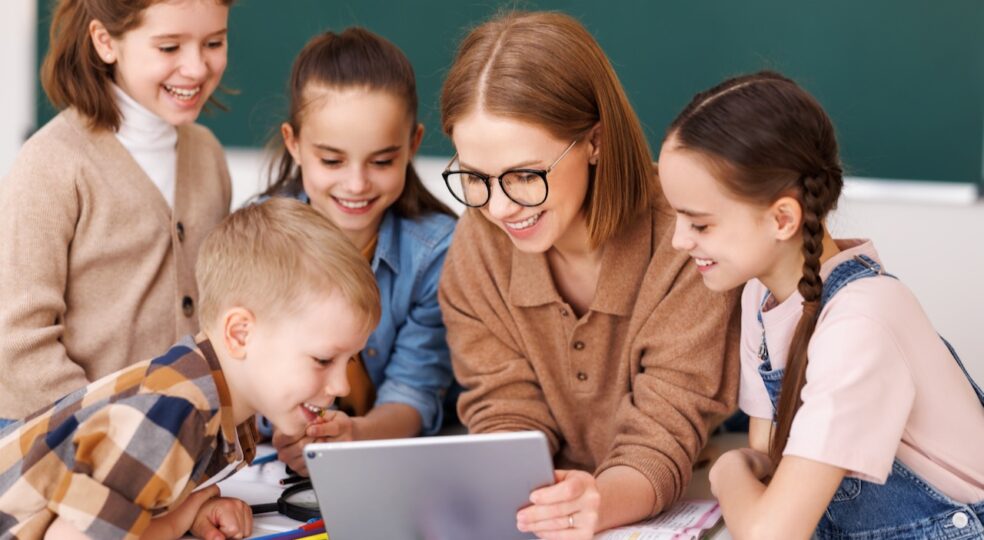
Learning is about acquiring knowledge and skills. Every person learns differently. Some children can already read and write when they start school. Others need a little more time to learn these skills.
For the children with learning disabilities, the classroom is often fraught with challenges connected. Therefore, students with special needs used to be taught separately. Collaborative learning is an innovative pedagogical concept. This method is based on the recognition that Children with and without special needs learning can support.
In shared learning, all children are cared for and taught together. Pupils with learning difficulties no longer feel excluded, but are integrated into the community. Social integration is an important aspect that is of great significance for children's development.
Instructional design that promotes learning in community for Children with and without impairments and limitations is referred to as collaborative learning. This method deliberately avoids teaching and supervising students with special needs separately from the other children.
Joint learning should enable children with learning difficulties to grow up in their natural environment. Unrestricted participation in the classroom and in everyday life is generally ensured for all children. Children recommended.
In everyday school life, this recommendation is to be realized through joint learning. Depending on the need for support, individual learning paths can be developed and children in need of support can receive targeted assistance.
Collaborative learning promotes active participation in the classroom. The social integration facilitated by this method contributes to a better understanding of learning disabilities and to positive interaction with each other.

Common ground promotes cohesion in the group. Learning together is important for making contacts from which friendships develop. At the same time, prejudices that children with learning difficulties are often exposed to are reduced. Meeting at eye level strengthens the Self-confidence students in need of support.
Children who have problems learning experience through this Learning methodthat they are accepted and valued despite their learning disabilities. For students without learning difficulties, learning together is an opportunity to overcome fears of contact, Tolerance and willingness to help.
Interaction with each other becomes easier and more natural when people learn together. Learning together, acquiring knowledge and skills, is a bonding experience. The individual personality of each child in the group is strengthened. All students benefit from learning together. Regardless of their prerequisites and talents, they receive the same attention.
Learning together is intended to make the rigid education system more flexible. The focus is on the students. The children can use their skills to help their peers with learning problems to learn.
Collaborative learning is not limited to the classroom. Parents are also involved in this concept. As a parent, you can help your child overcome learning difficulties and learn more easily.
Does your child have difficulty learning? Does he or she learn more slowly, can't concentrate, or can't recognize correlations? Learning problems can occur with any child.
Exam anxiety and learning stress block learning. Even a proven learning disability can improve by learning together at home with learning coaching. We have put together 8 tips for you:
In order to motivate your child to learn and to provide targeted support, we offer you the Greator Learning coaching e-book to the heart. In this e-book from Markus Hofmannone of the most successful memory trainers in Europe, you'll learn how to best support your child. You can apply the tried and tested tips at home. Your child will soon learn with less effort and enjoy the lessons more.

Communication is the most important bonding agent between people. We communicate with each other to exchange information, expectations, wishes and feelings. The Communication skills is an essential component of social intelligence. It enables us to get along well with other people.
A learning culture is only successful if communication takes place at eye level and the other person's point of view is taken into account. When learning together, communication is the key to success. Talking to and listening to each other creates the conditions for a pleasant learning environment. Under these conditions, children with learning difficulties find learning easier.
Learning together is more effective when teachers and parents work together. That's why good communication between kindergarten, school and guardians is just as important. Parents' evenings and other meetings offer the opportunity to ask specifically about the child's progress. The collaboration between teachers and parents should be cooperative and supportive.
Is learning difficult for your child? Does he or she talk to you about learning problems? Encourage open communication. Encourage your child to communicate with you. Refrain from excessive criticism.
Being criticized or punished for poor grades at school makes children Fear. The Self-esteemwhich is usually not very pronounced in children with learning disabilities.
Good communication helps, Misunderstandings prevent. Pay attention to how your child talks about class. Are there disagreements with classmates? Are the teachers too strict? Is your child too strict with the homework? overwhelmed? These problems reinforce the learning difficulties.
Learning together is hardly possible without communication. Teachers are required to listen to their students and respond to them. Concrete feedback helps to recognize mistakes and avoid them in the future. Communicating creates a safe and comfortable learning environment.
When teachers, students and parents mindful communicate with each other, this is enriching for everyone involved. Children find it easier to learn when they are praised for their progress rather than criticized for small things.
Shared learning is a project developed to promote the social integration of children with Learning Disabilities to promote. However, there are also some obstacles in collaborative learning. The 5 most common challenges in collaborative learning are:
The biggest challenge in collaborative learning is the difference in learning ability. Whereas gifted children grasp learning content very quickly, it takes time for students with Learning Disability much longer.
The way of learning also depends on the personal Learning type ab. A distinction is made between different learning types. The systems researcher Frederic Vester, a professor working at the Bundeswehr University in Munich, developed the 4 learning types model named after him. The four learning types are referred to as:
learning types categorized. Vester noted that a person's learning style depends on personality as well as individual strengths and weaknesses depends.
Thus, the auditory learning type learns by listening and speaking, while the visual-visual learning type grasps learning content by seeing and observing. The haptic-kinesthetic learning type acquires knowledge by touching and feeling, and the cognitive-intellectual learning type learns by reading and thinking.
Do you know what type of learner your child is? Do the Learning type test! Answer the questions as precisely as possible. This will help you find out what type of learner you actually are. Your child can also answer the test questions.
On the basis of the test evaluation, everyone finds out which learning type they belong to. You'll also get tips on how to optimize your learning strategy and make the most of your learning skills.
Do you want to support your child in a targeted way? Then integrate learning together into everyday family life. Structure the daily routine. With these 6 steps, you can easily combine learning together with your family life:
Collaborative learning helps integrate children with learning disabilities. You can support the development of your Promote childrenby actively supporting them in this.
In our free Learning coaching e-book we show you different learning techniques for your child that are helpful in class and when doing homework. Use the tips for constructive communication to make learning fun for your child!

